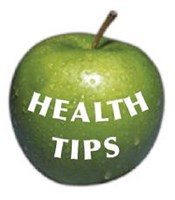We know that not smoking, being active and making healthy food choices are good for our bodies. But what about our wallets? Research shows that healthy habits can save us money.
Gayle Coleman, nutrition education specialist with Cooperative Extension Family Living Programs, offers 10 tips for increasing your health and wealth in 2013.
1. Stop (or don’t start) smoking. Simple math reveals big savings. For example, if you smoke one pack of cigarettes a day at $5 per pack and quit smoking, you could save up to $150 per month or $1800 per year. Smokers also are more likely to save money on other health care expenses such as treatment for upper respiratory illness.
2. Take a brisk walk for 30 minutes (or more) each day. “Research shows that people who get regular physical activity are less likely to have heart disease, type 2 diabetes, osteoporosis and some cancers,” says Coleman. Being physically active helps people manage their stress, blood pressure, blood sugar and body weight. Studies show that average out-of-pocket spending for individuals with at least one chronic medical condition such as diabetes was $655 annually per person. For individuals with three or more chronic conditions it was $1,865 annually. “Compare these costs to the cost of a pair of comfortable walking shoes,” says Coleman. “And, if you walk or bike to short destinations instead of taking a car, then you could save on transportation costs.”
3. Enjoy your food but eat less. Choosing smaller portions of food often means consuming fewer calories and maintaining a healthy weight, especially if you’re cutting back on desserts, high-fat meats and sugary beverages. Research indicates that medical costs for U.S. employers for obesity-related medical claims alone accounted for almost $250 per employee in 2007–costs usually passed on to employees in the form of higher insurance premiums. Eating smaller portions also means savings by purchasing less food.
4. Wash your hands. Lathering up with soap and water, and scrubbing your hands for 20 seconds is key to preventing illnesses such as colds and flu. Staying healthy could also save wages. For example, an employee making $10 per hour without the benefit of sick leave would lose $80 per day if they missed work due to illness or to care for a sick child.
5. Drink water in place of sugary beverages. Replacing sugary beverages with water can save hundreds of dollars a year. For example, if you spend $1 per day on soda and replace it with tap water, you could save $30 per month or $356 per year.
6. Eat fruit in place of sweet snacks. Fruits are loaded with nutrients, low in calories and can reduce the risk of developing chronic disease such as cancer. Coleman notes that the cost of a piece of fruit might be about the same as a candy bar, but when you look at potential cost savings for preventing illness, fruit is the better bargain.
7. Munch on raw veggies in place of snack chips. “Vegetables are another nutrition bargain,” says Coleman. “The cost of a bag of baby carrots is less than the cost of a similar size bag of snack chips–but the carrots could save you money through better health and lower healthcare costs.”
8. Plan and prepare low-cost meals. A few hours a week spent planning your shopping and preparing meals can save your family hundreds of dollars a year. Include foods that are a good buy–produce that is in season or lean meat that is on sale. Planning a weekly menu also increases the chances that food you purchase will be used before it spoils. For example, you might save $5 per week by bringing two lunches from home rather than eating out, which adds up to $20 per month or $240 per year. “And don’t forget to use foods that you might get from programs like WIC or gardens,” says Coleman.
9. Read labels and follow directions. For example, if you or a family member have a nut allergy and are not able to read food labels, the consequences can be significant. Research indicates that the cost of low health literacy to the Wisconsin economy is in the range of $3.4 billion to $7.6 billion annually.
10. Prevent illness. You’ve probably heard the phrase “an ounce of prevention is worth a pound of cure.” The same thing applies to healthcare costs. Getting a flu vaccine at the local drugstore might cost $30 a year. But you save on the costs of medications, lost work, doctors’ visits and even hospitalization to treat the flu if you get sick. Similarly, early detection and treatment of diseases such as heart disease, diabetes and cancer through low-cost screenings, could save you the costs of more extensive treatment down the road.







